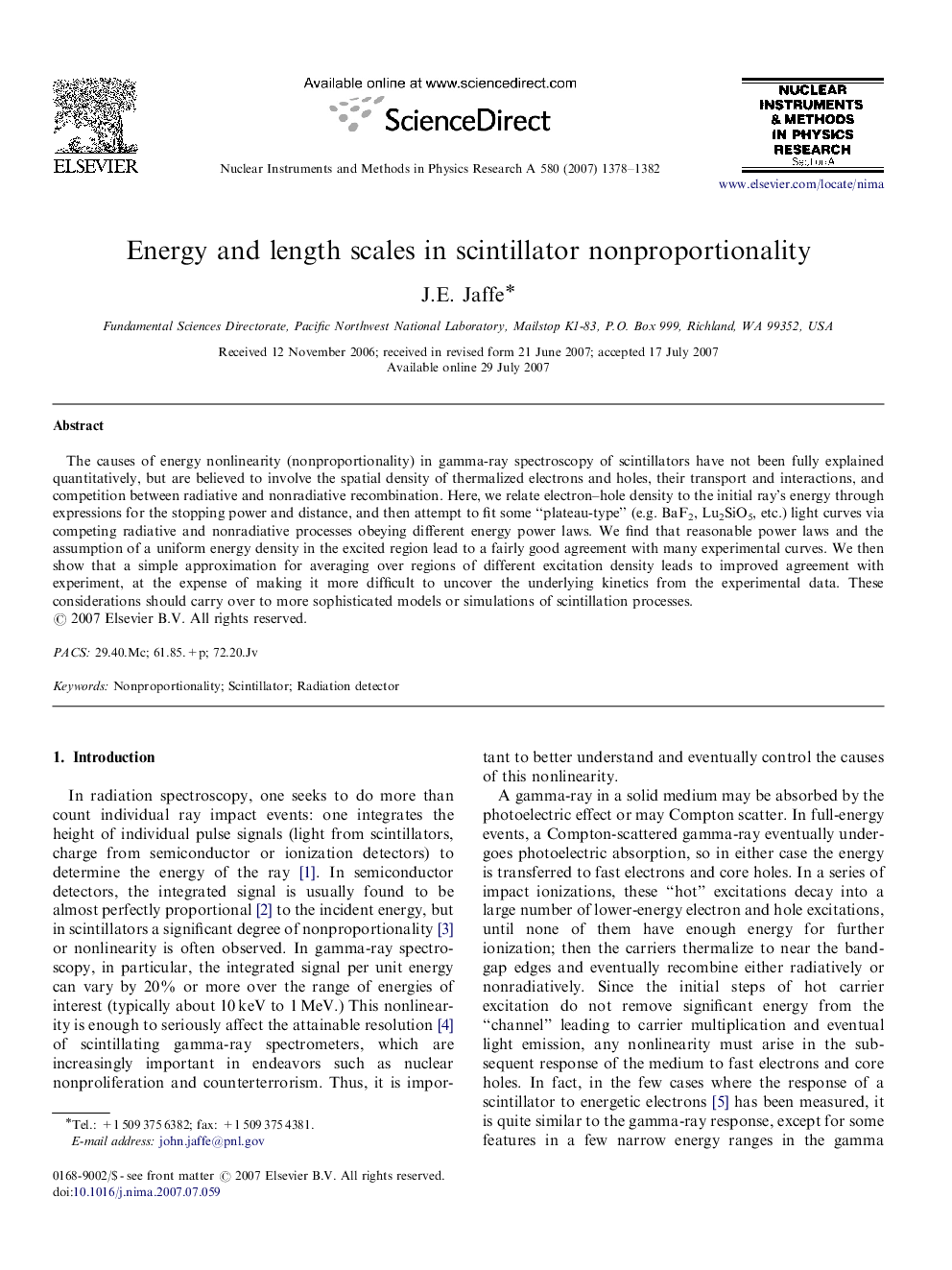| Article ID | Journal | Published Year | Pages | File Type |
|---|---|---|---|---|
| 1830334 | Nuclear Instruments and Methods in Physics Research Section A: Accelerators, Spectrometers, Detectors and Associated Equipment | 2007 | 5 Pages |
The causes of energy nonlinearity (nonproportionality) in gamma-ray spectroscopy of scintillators have not been fully explained quantitatively, but are believed to involve the spatial density of thermalized electrons and holes, their transport and interactions, and competition between radiative and nonradiative recombination. Here, we relate electron–hole density to the initial ray's energy through expressions for the stopping power and distance, and then attempt to fit some “plateau-type” (e.g. BaF2, Lu2SiO5, etc.) light curves via competing radiative and nonradiative processes obeying different energy power laws. We find that reasonable power laws and the assumption of a uniform energy density in the excited region lead to a fairly good agreement with many experimental curves. We then show that a simple approximation for averaging over regions of different excitation density leads to improved agreement with experiment, at the expense of making it more difficult to uncover the underlying kinetics from the experimental data. These considerations should carry over to more sophisticated models or simulations of scintillation processes.
